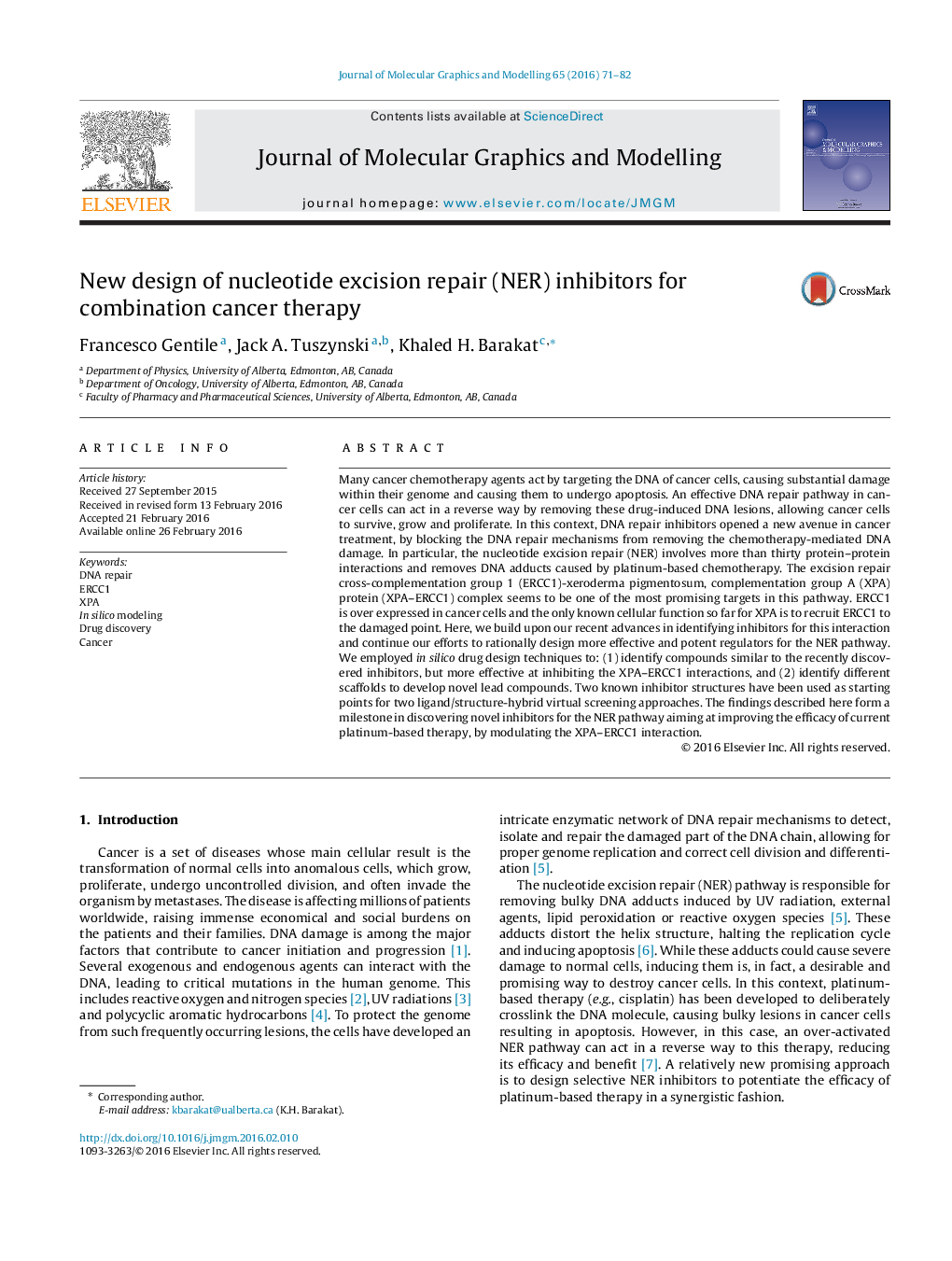| کد مقاله | کد نشریه | سال انتشار | مقاله انگلیسی | نسخه تمام متن |
|---|---|---|---|---|
| 443418 | 692719 | 2016 | 12 صفحه PDF | دانلود رایگان |

• NER pathway inhibition enhances platinum-based chemotherapy action.
• We refine our search of XPA–ERCC1 inhibitors.
• Novel small molecules have been identified as potential NER blockers using virtual screening.
• The identified compounds destroy XPA–ERCC1 complex by binding to ERCC1 central domain.
• These molecules are promising candidates for combination cancer therapy.
Many cancer chemotherapy agents act by targeting the DNA of cancer cells, causing substantial damage within their genome and causing them to undergo apoptosis. An effective DNA repair pathway in cancer cells can act in a reverse way by removing these drug-induced DNA lesions, allowing cancer cells to survive, grow and proliferate. In this context, DNA repair inhibitors opened a new avenue in cancer treatment, by blocking the DNA repair mechanisms from removing the chemotherapy-mediated DNA damage. In particular, the nucleotide excision repair (NER) involves more than thirty protein–protein interactions and removes DNA adducts caused by platinum-based chemotherapy. The excision repair cross-complementation group 1 (ERCC1)-xeroderma pigmentosum, complementation group A (XPA) protein (XPA–ERCC1) complex seems to be one of the most promising targets in this pathway. ERCC1 is over expressed in cancer cells and the only known cellular function so far for XPA is to recruit ERCC1 to the damaged point. Here, we build upon our recent advances in identifying inhibitors for this interaction and continue our efforts to rationally design more effective and potent regulators for the NER pathway. We employed in silico drug design techniques to: (1) identify compounds similar to the recently discovered inhibitors, but more effective at inhibiting the XPA–ERCC1 interactions, and (2) identify different scaffolds to develop novel lead compounds. Two known inhibitor structures have been used as starting points for two ligand/structure-hybrid virtual screening approaches. The findings described here form a milestone in discovering novel inhibitors for the NER pathway aiming at improving the efficacy of current platinum-based therapy, by modulating the XPA–ERCC1 interaction.
Figure optionsDownload high-quality image (295 K)Download as PowerPoint slide
Journal: Journal of Molecular Graphics and Modelling - Volume 65, April 2016, Pages 71–82